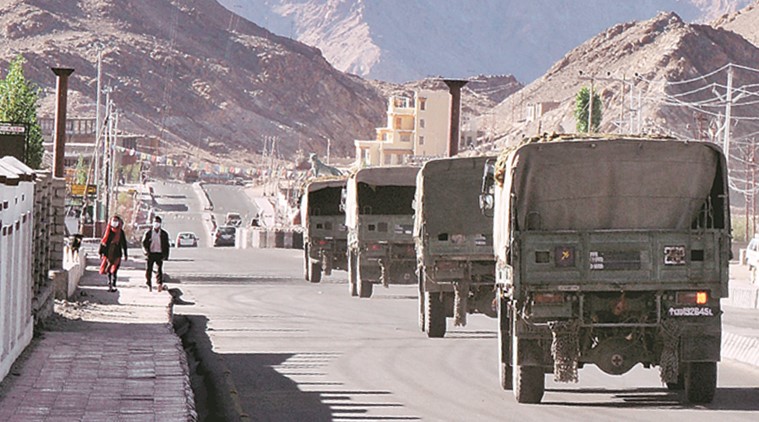
SOURCE: ENS
After the breakdown of talks at the level of the Corps Commander to restore status quo ante at friction points on the Line of Actual Control (LAC) in Ladakh, the division commanders of India and China are likely to meet in the coming days to arrive at a plan to reduce tensions in the strategic Depsang Plains. Official sources told The Indian Express that the meeting would be held at the Daulat Beg Oldie (DBO)-Tianwendian border meeting point on the LAC.
The Indian delegation will be led by the General Officer Commanding of 3 Mountain Division, Major General Abhijit Bapat, at the meeting which is likely to happen “in the next few days,” sources said. The agenda of the meeting, sources said, is to reduce tensions at the Depsang Plains where both sides have massed troops on the disputed border. More than 15,000 Chinese troops are estimated to have been deployed opposite Depsang, where India has also mobilised matching troops on its side, including an armoured brigade.
The meeting at the DBO-Tianwenidan BPM, located at an altitude of 16,000 feet, is expected to discuss a plan for de-escalation by both the sides in an area considered strategically important by both armies. In all the games, sources said, Depsang is seen as an area of highest priority by the Army because of its location in northern Ladakh: access to DBO airstrip, the Karakoram region, and the 255-km Darbuk-Shyok-DBO (DSDBO) road, besides providing depth to China’s western highway, its main link between the two restive provinces of Xinjiang and Tibet.
The Indian side will also seek restoration of patrolling rights for its soldiers in the area, which have been denied by the Chinese soldiers in recent months, sources said. Indian soldiers have not been able to access PP-10, PP-11, PP-11A, PP-12 and PP-13, as the Chinese soldiers have displayed very aggressive behaviour since May.
The area of Depsang Plains has been disputed by both countries, with a large number of transgressions by Chinese patrols recorded by the Indian side: 157 in 2019, up from 83 in 2018 and 75 in 2017. The contentious nature of the LAC has led to the armies often blocking patrols of the other side, but there has been complete denial of erstwhile patrolling rights to the Indians since May, adding to the tensions.
As reported earlier, the Chinese army has blocked Indian patrols at a place called Y-junction or Bottleneck on the Depsang Plains, in another attempt to shift the LAC further west on the disputed boundary. Bottleneck is known as Y-junction because the track coming from Burtse forks into two tracks, one going northwards along the Raki Nala to Patrolling Point-10 (PP-10) and the other south-eastward towards PP-13. These two tracks are followed by Indian patrols on foot up to PP-10, PP-11, PP-11A, PP-12 and PP-13.
Bottleneck, which derives its name from a rocky outcrop that prevents vehicular movement across the Depsang Plains, is the place where the Chinese had pitched tents after an ingress in April 2013. It is around 18 km on the Indian side of the LAC, though the Chinese claim line lies another 5 km further west. This location is 7 km to the north-east of Burtse, a Ladakh town which falls on the DSDBO road.






